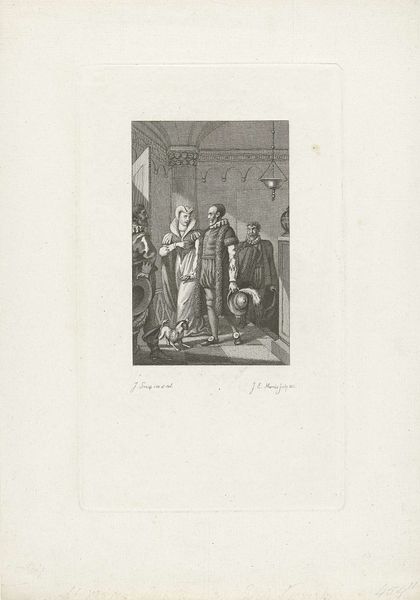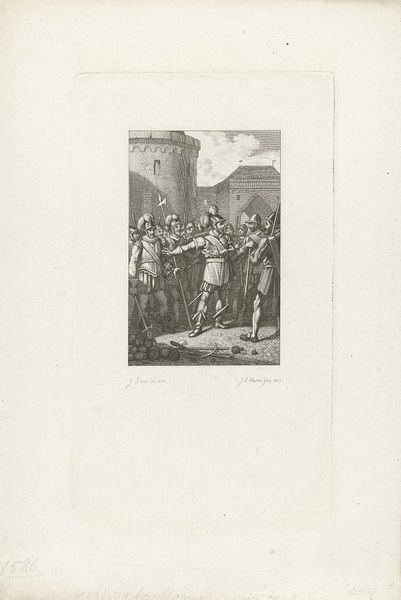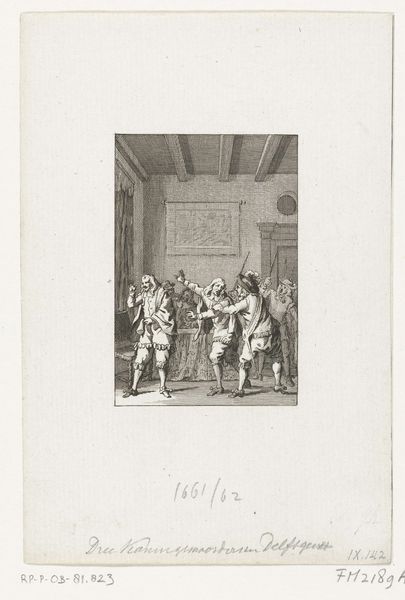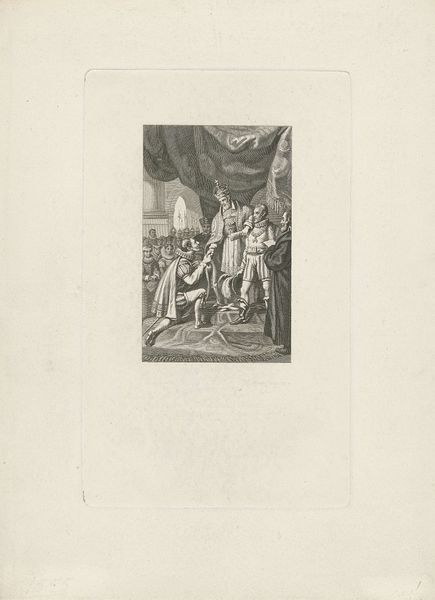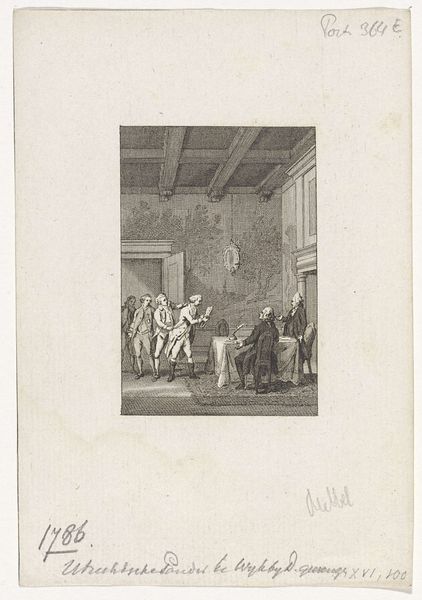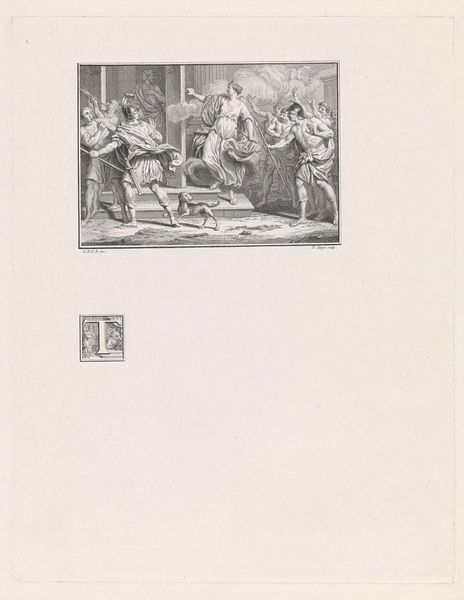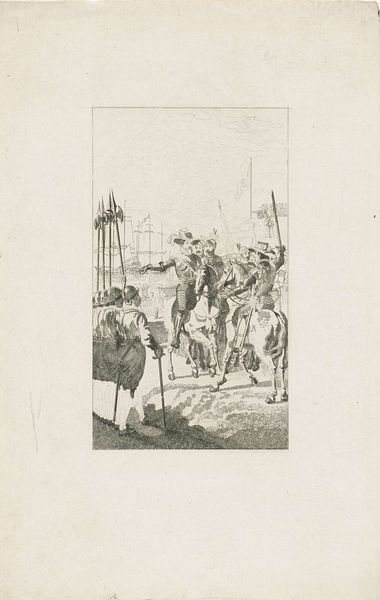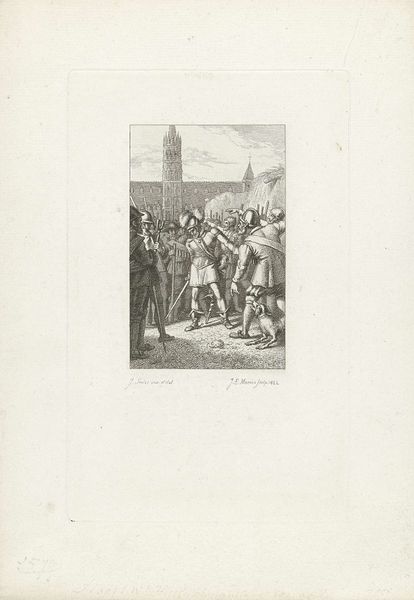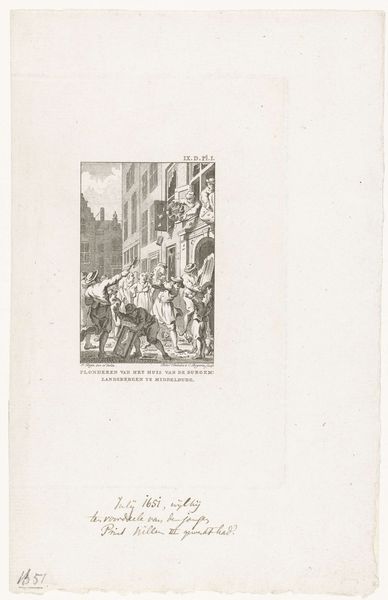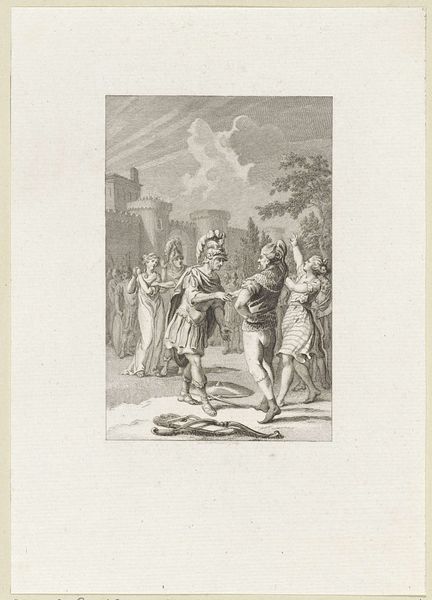
print, engraving
#
neoclacissism
# print
#
old engraving style
#
genre-painting
#
history-painting
#
engraving
Dimensions: height 238 mm, width 145 mm
Copyright: Rijks Museum: Open Domain
Curator: Jacob Ernst Marcus created this engraving entitled "Verbond der Edelen, 1566," in 1820. It's currently held at the Rijksmuseum. It depicts, as the title suggests, a historical moment of political alliance. What's your immediate response to it? Editor: You know, it feels very staged, almost like a theatrical production. There's a solemnity about it, but also a kind of… stiffness. It doesn't feel spontaneous, more like a reenactment frozen in time. The high contrast evokes the kind of heroic storytelling from this era. Curator: Indeed. Marcus was working in a Neoclassical mode here. This style often involved a return to idealized forms and themes, which were seen as representative of moral virtue. Consider the historical context: the "Verbond der Edelen," or "Compromise of Nobles," was a pivotal moment of defiance against Spanish rule in the Netherlands. These nobles sought religious tolerance and greater autonomy. Editor: So, the stiffness becomes more interesting. It's not just a lack of spontaneity, but maybe a conscious choice to represent the gravity of the historical situation? As though the weight of their decision and potential consequences for those in opposition is a shared and heavy burden to bear. Curator: Precisely! This work also exists within an environment of increasing nationalist sentiment in the early 19th century. Looking back at key moments like these was meant to help the Netherlands negotiate its sense of national identity. By using the print medium, Marcus democratized the images to reach as many Dutch viewers as possible, which allowed them to align their own feelings of dissent in real-time to those of a mythologized past. Editor: The cross-hatching is phenomenal here. I think of etching techniques as ways to explore darker moods but what I see in this print are strategic moments to explore lightness in political acts like an oath-swearing, or a unification in ideals. There’s an argument that could be made about lighting in this picture that says the Enlightenment Era never left but adapted to revolutionary causes. Curator: I agree. I appreciate how your more subjective impressions have allowed us to dig a bit more deeply into the artwork itself, how it resonates even now, and how it's part of something bigger, more complex, and still so relevant. Editor: Exactly. Works like these offer new reflections through old conventions, which may not be immediately obvious, but it becomes exciting once revealed.
Comments
No comments
Be the first to comment and join the conversation on the ultimate creative platform.
